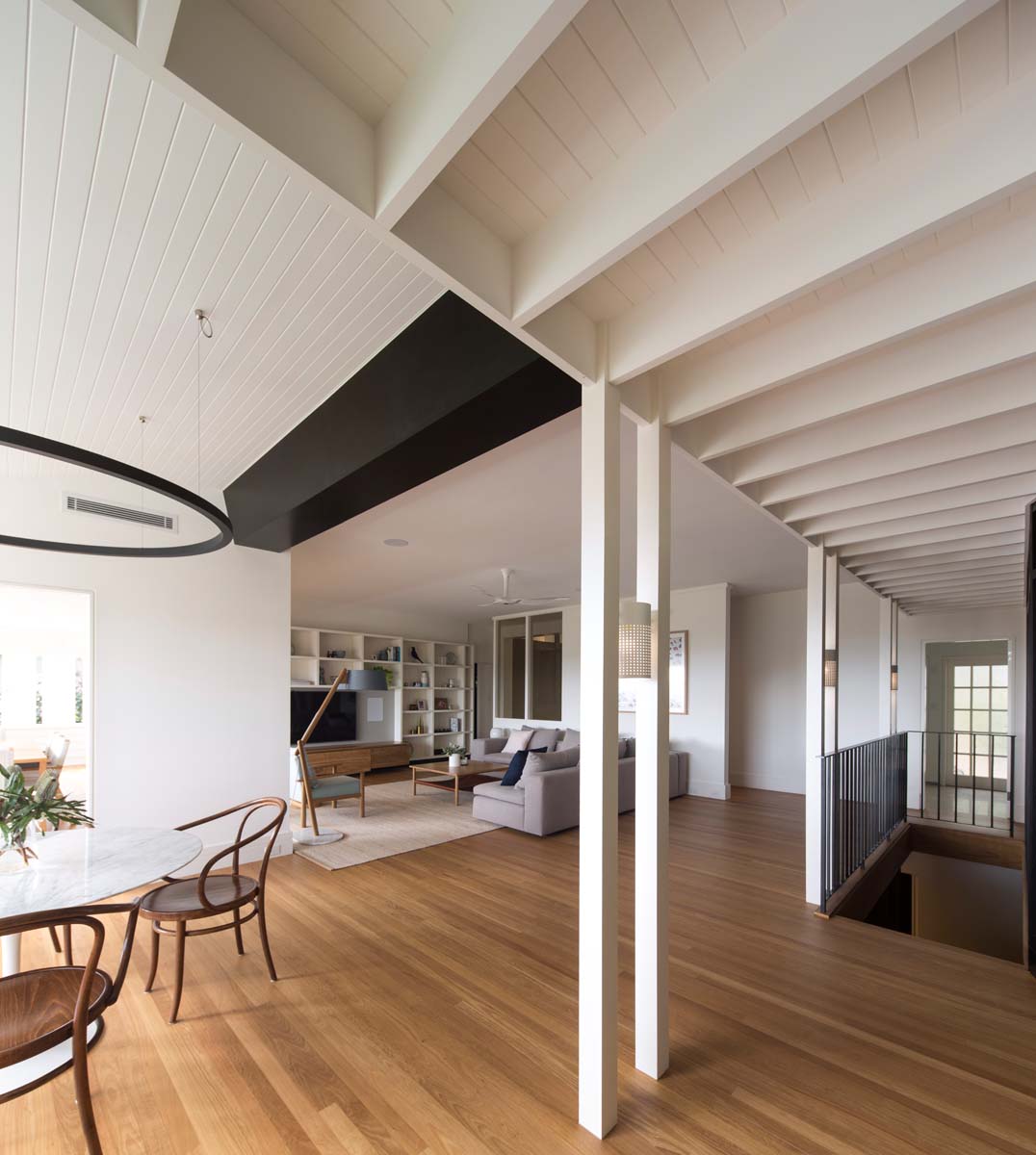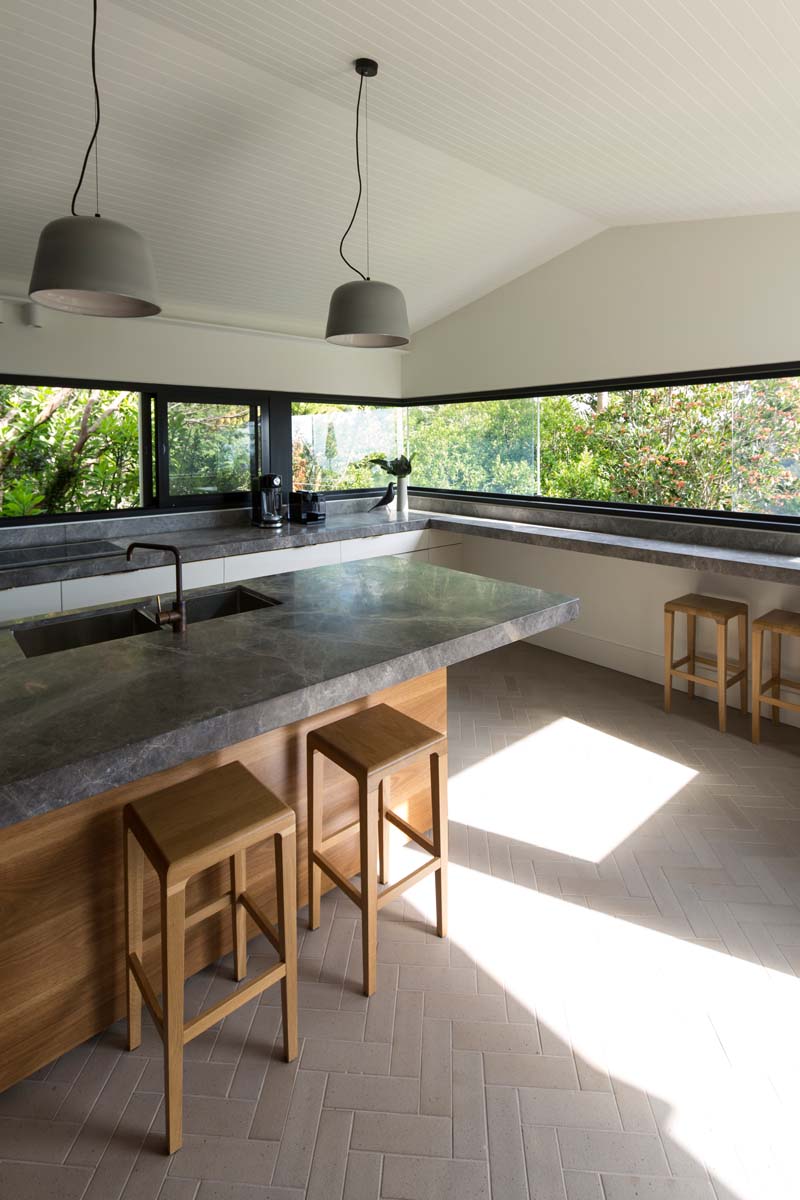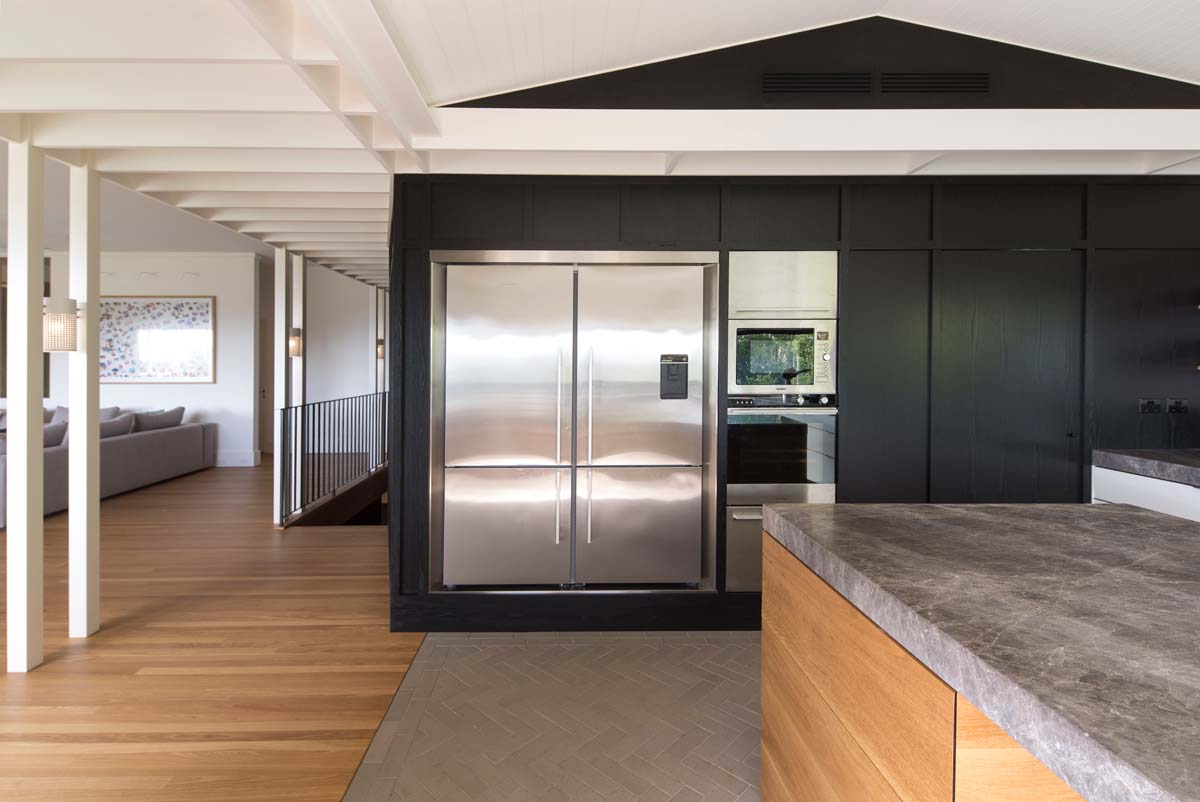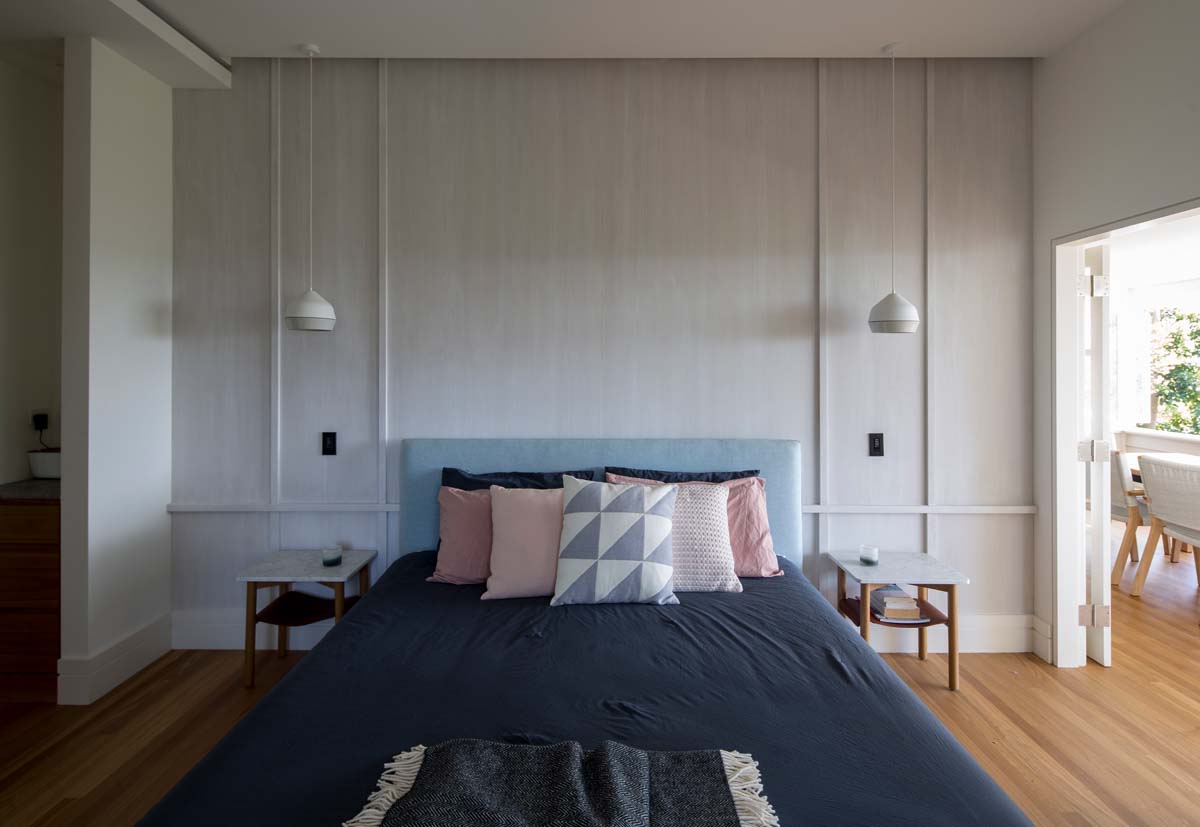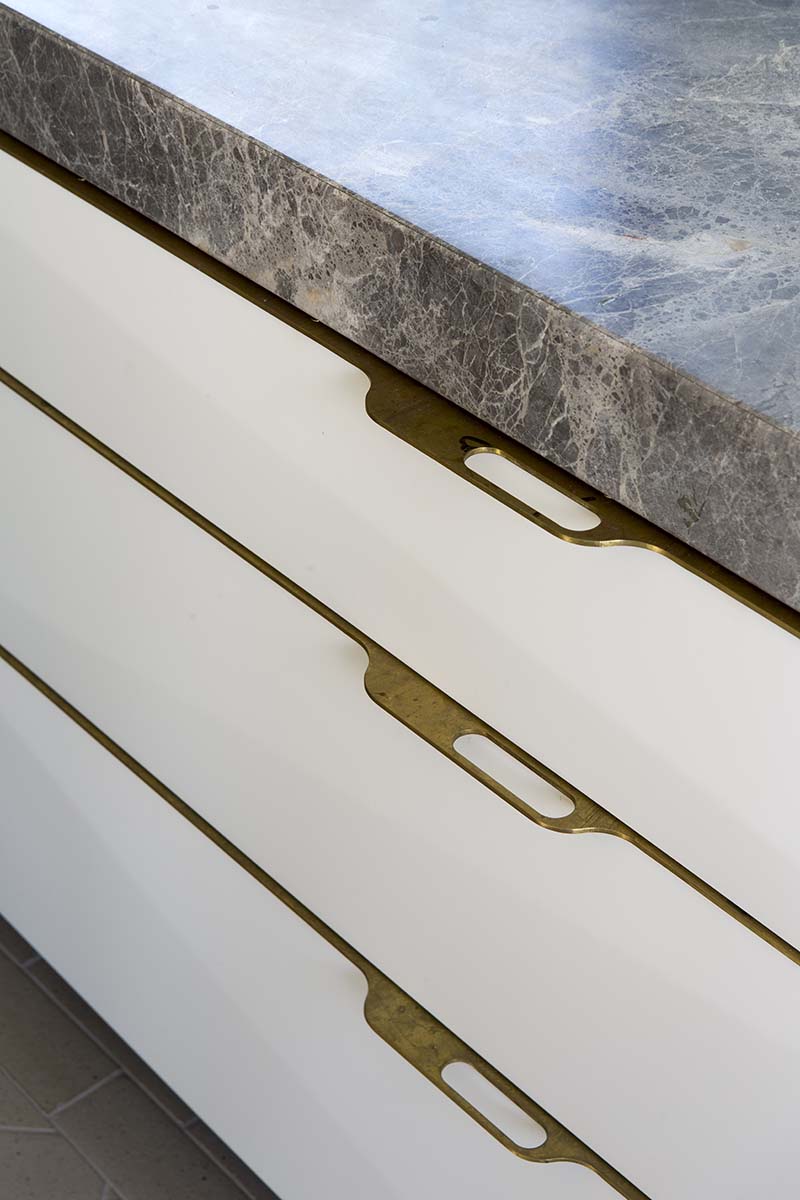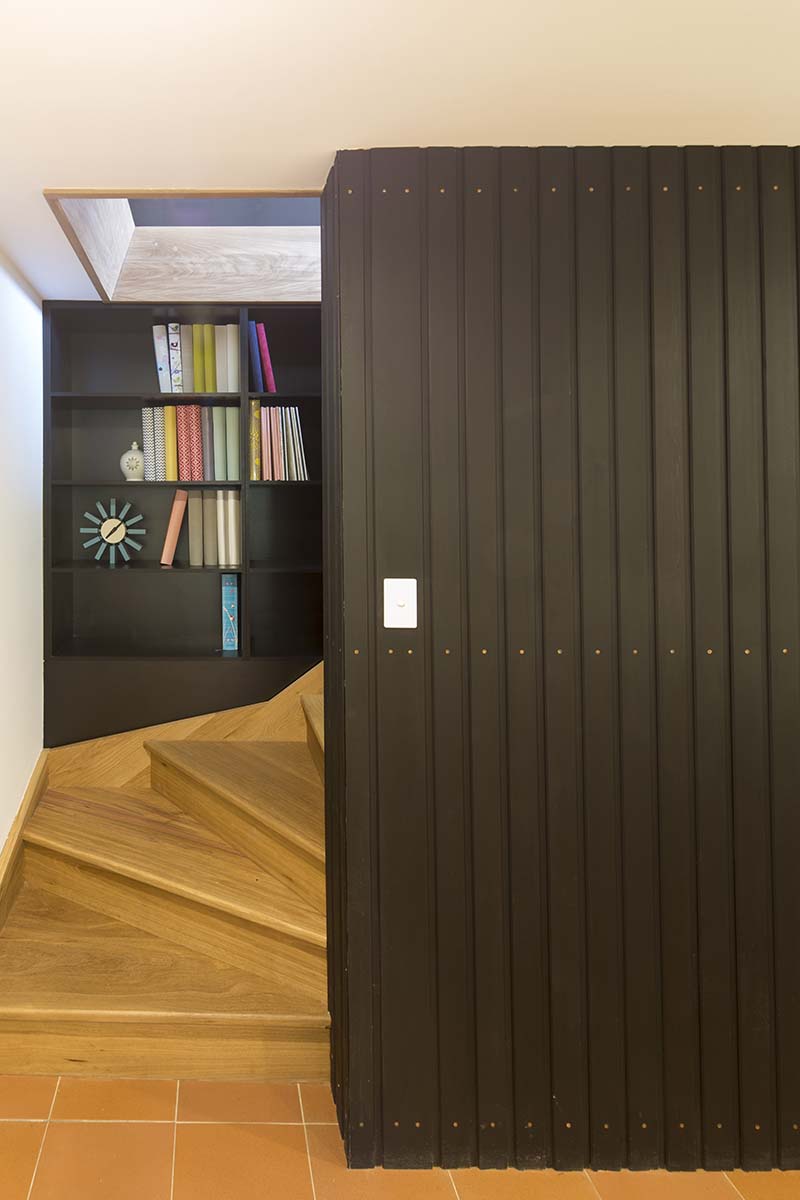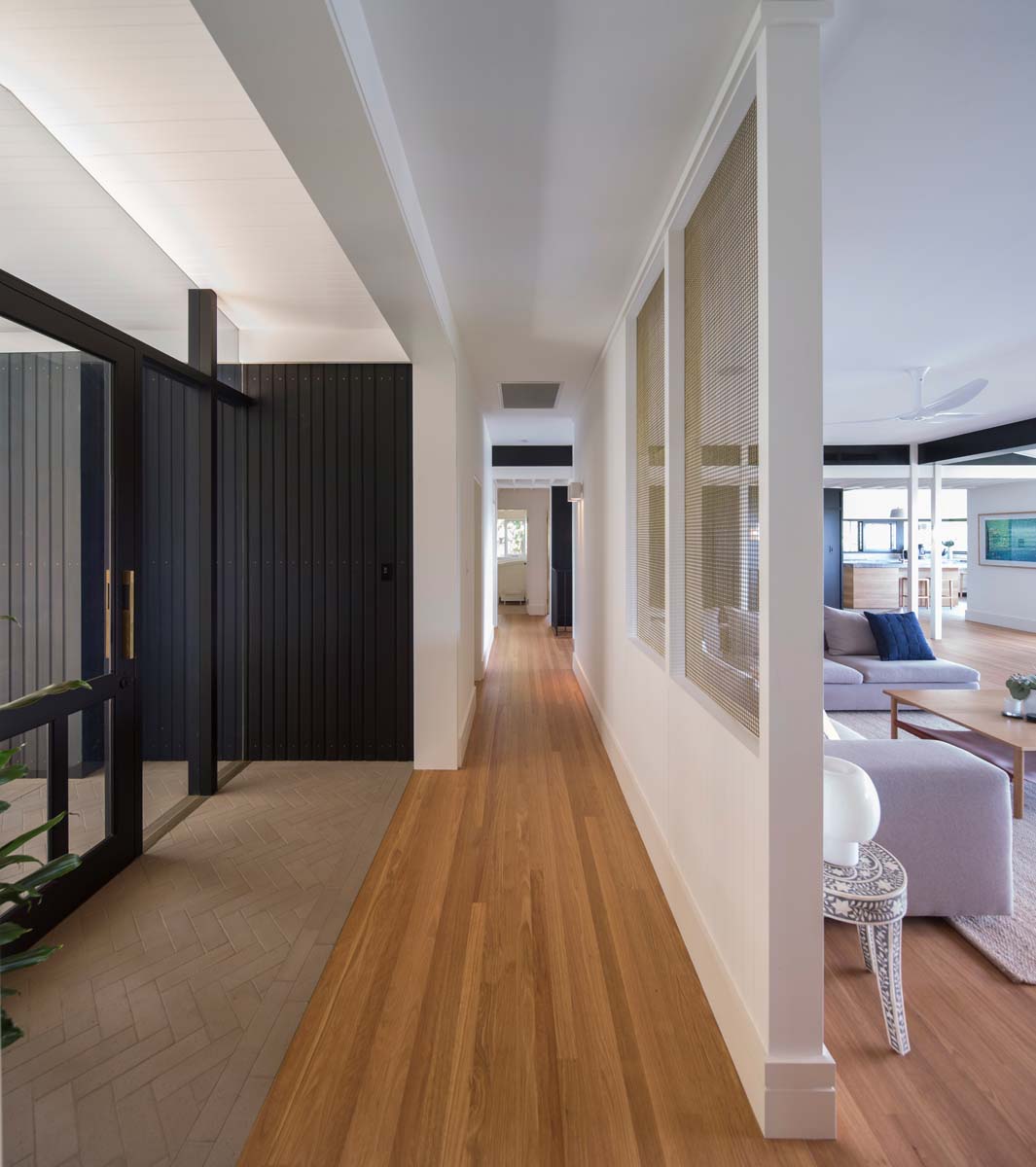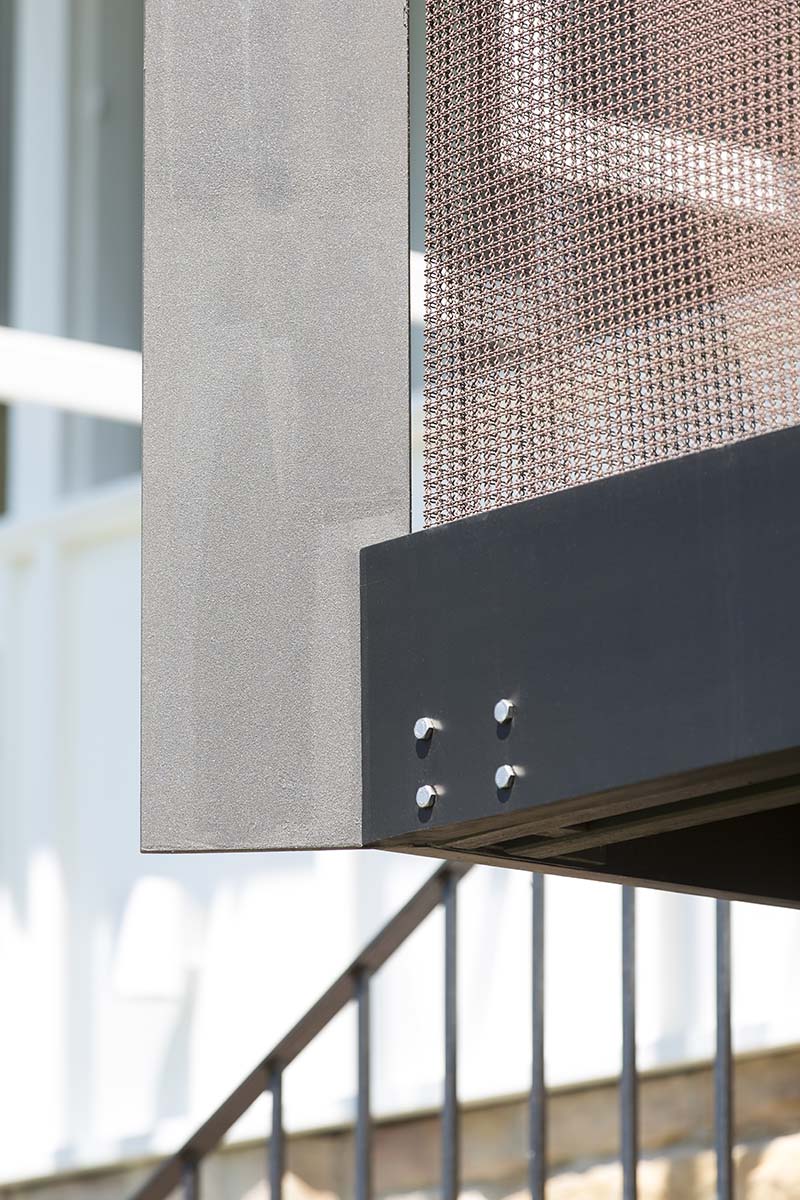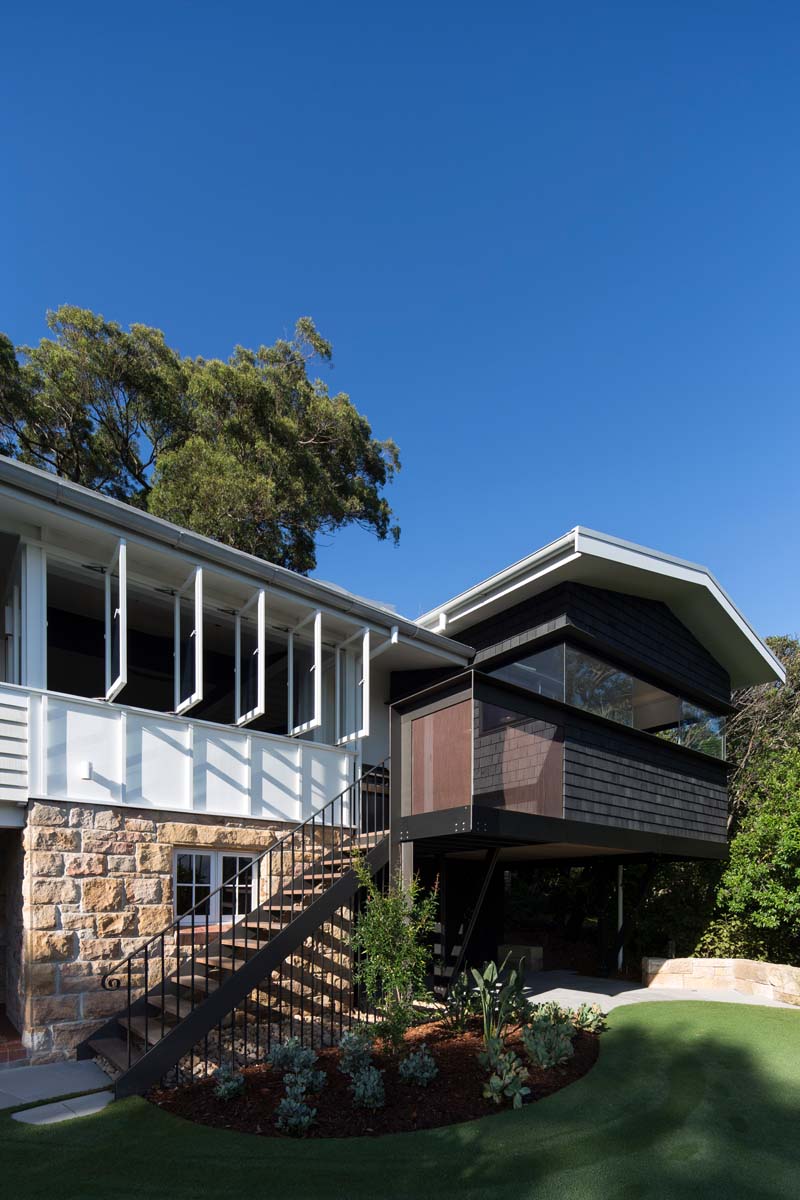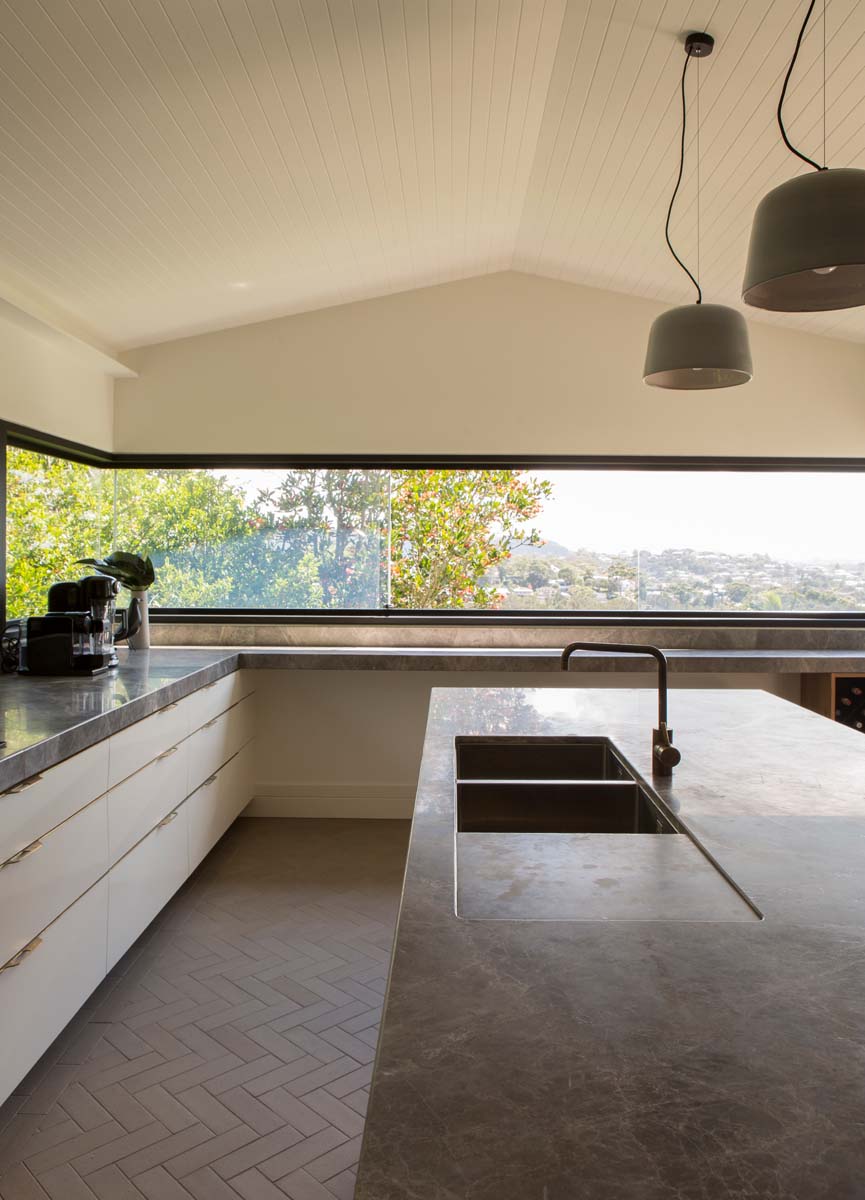Chillamurra
Located at Terrigal Beach, Chillamurra encapsulates a relaxed, coastal home, catering for an evolving programme of living for a growing young family. The alteration/additions explore materials and forms suggestive of the home’s 1920s heritage, juxtaposed with a contemporary layering of function, detail, play on light and passive environmental control.
Chillamurra places a value on the ideas of a sense of warmth, a feeling of comfort and a desire for relaxation, and contextual core values of longevity, functionality, privacy, detail, simplicity and heritage. A sense of longevity is achieved through the use of enduring materials, suggestive of the home’s history, detailed to achieve a sense of contemporary timelessness. The use of materials whose natural patina build over time enables the home to continue to age gracefully. Reimagining the functional arrangement, a centralised kitchen hub organises daily indoor and outdoor activities.
The works to the historic Chillamurra embody textures, materials, forms and proportions evocative of the relaxed coastal experience of Terrigal in the early 1900s, whilst the alterations enable the home to be reimagined into today’s lifestyle. The home is perched above it’s original turn of the century “open garden winning” layout filled with rare plants.
The balcony remains as a passive space, with a new wing complementing the existing forms and undercroft. The juxtaposition of the new cantilever wing with black stained cedar shakes, against the original sandstone and weatherboard space imbues new layering to the home.
Experiences are shared as a family; a spectacular panoramic vista is revealed; an entry sequence down into the property to the house and reworked undercroft spaces provide new, integral connections to the garden.
Privacy is achieved through the use of solid adjustable screen details, allowing the control of air flow and obscure overlooking to and from neighbouring properties. Internal privacy and flexibility in the occupants experience and usage of the spaces are provided through programmatic separation of the various functions of the house. A rich layer of detail overlay a simple programmatic diagram to offer the emotional qualities of warmth, comfort and relaxation.
The collaborative approach focused on achieving a greater and more enduring outcome than purely “conventional” solutions, and allowed for materials and detailing which utilised sustainable and cost effective materials to be utilised in bespoke ways. Black Formply was used as bulkhead joinery, with minimal additional trades/ finishing; folded and aqua-jet cut brass sheet was used extensively; bespoke “builder-executed” lighting solutions devised; sheetply in various finishes were utilised both as wall finish/ texture/ structure; stain finishes were used in lieu of paint wherever possible, etc. The selections were all based on cost-effective ability to patina and age gracefully.
The project team consisted of the Architects, Client, Builder, Garden Designer, Lighting Designer and Artisans. A value engineering and “a better way through bespoke” approach to the layering in the construction and detailing of the works resulted in much of the project becoming tailored (bespoke lights, thresholds, aquajet-cut brass handles, linings). Cost decisions were based on innovation, research and contribution to level of finish/ appropriateness. Site meetings were collaborations of Architect led discussions/ workshops, with all members of the team involved in the decision making process, whilst allowing the Architectural intent to be not only maintained, but also enhanced.
| Architect | White + Dickson Architects |
| Landscape Architect | Michael Cooke Garden Design |
| Photography | Brett Boardman |
